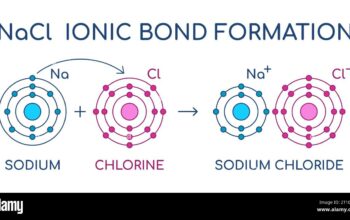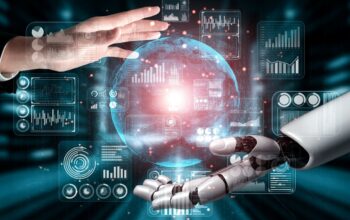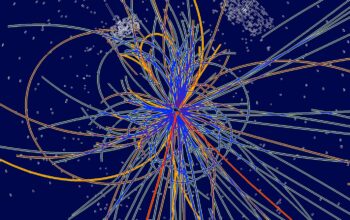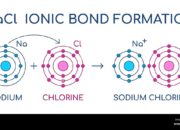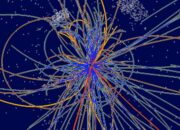In the intricate tapestry of quantum physics, spin emerges as one of the most enigmatic yet fundamental properties of particles, particularly electrons. This intrinsic form of angular momentum transcends classical analogies, presenting a rich landscape for research and exploration. When one speaks of electron spin, it is not merely a discussion of rotation but a confluence of complex behaviors that dictate the interactions of matter at the microscopic level.
Spin can be metaphorically likened to a maestro guiding an orchestra. Just as a conductor deftly marshals the players to achieve harmony, the spin of electrons orchestrates a myriad of interactions that underpin the very fabric of matter. This property, deeply rooted in the principles of quantum mechanics, holds implications that span the realms of material science, quantum computing, and information technology.
Electrons possess a spin of either +1/2 or -1/2, commonly referred to as “up” and “down.” This binary nature facilitates complex interactions within atoms and between them, allowing electrons to occupy the same space in a cloud-like formation, albeit obeying the Pauli exclusion principle which asserts that no two electrons can inhabit the same quantum state simultaneously. Thus emerges a ballet of spins, choreographing the electron configurations that reveal the elements’ chemical characteristics.
The dynamism of electron spin comes into sharp focus when examined through the lens of femtochemistry—a discipline that explores chemical reactions on the femtosecond time scale, where 10^-15 seconds define the duration. During this fleeting interval, electrons can flip their spins in a matter of picoseconds, an event that transports a tremendous amount of energy across several dimensions. Such a rapid transformation indicates an electron’s ability to migrate between potential energy states, akin to a dancer transitioning smoothly across a stage in synchronicity with the rhythm of an unseen conductor. This speedy manipulation of spin states is pivotal in understanding phenomena such as magnetoresistance and superfluidity.
The recent advancements in laser technology have enabled scientists to probe these ephemeral spin transitions with unprecedented precision. By employing ultra-fast laser pulses, researchers have unraveled the intricate mechanisms governing spin dynamics. This advancement is reminiscent of opening a window to a world previously believed to be obscured by darkness. With laser pulses measured in femtoseconds, investigators can initiate and observe spin-flipping events, yielding insights into the transient configurations that dictate the behavior of materials at exceedingly short time scales.
Moreover, the implications of spin dynamics extend well beyond theoretical confines, significantly impacting technological arenas such as spintronics. This burgeoning field exploits the intrinsic spin of electrons to develop devices that harness both charge and spin for data processing and storage. In contrast to conventional electronics, where information is solely conveyed through electron charge, spintronics offers the tantalizing prospect of faster, more efficient devices. Imagine a computer operating not on the mere flickering of electrons but on their rotational choreography, promising a monumental leap in computational power.
The phenomena of spin-influenced phenomena, such as spin relaxation times and coherence times, emerge as crucial components in the quest for quantum computing. In this revolutionary arena, maintaining the coherence of a qubit— a quantum bit that can exist in superpositions of spin states— is paramount. The fleeting nature of spin transitions mirrors the struggles of a tightrope walker, teetering between states yet striving to maintain balance. If the coherence can be preserved long enough, quantum computers hold the potential to solve problems unmanageable for classical computational sources, heralding an era where complex simulations and calculations are executed in moments.
Research into the rapid flipping of spins continues to uncover serendipitous findings that challenge established paradigms. For instance, experiments have demonstrated the possibility of manipulating spin states via external magnetic fields and electric currents, leading to a more profound understanding of ferromagnetism and its applications in magnetic memory devices. The ripple effects of these discoveries extend from the realms of fundamental physics to wide-ranging technological applications.
Furthermore, the link between electron spin and quantum entanglement fosters a deeper intrigue. Entangled particles exhibit correlations that transcend classical description, showcasing nonlocal interactions that defy intuitive comprehension. This aspect of quantum mechanics—analogous to a pair of acrobats performing a synchronized routine—reveals the interconnectedness of individual spins across distances, a phenomenon that forms the bedrock of quantum telecommunication and secure data transmission.
As the journey through the quantum realm continues, the quest for understanding electron spin illuminates the myriad connections between seemingly disparate fields. The unique appeal lies not only in the complexity of the subject matter but also in the visceral metaphors that breathe life into abstract concepts. Each spin flip, each quantum leap embodies the relentless pursuit of knowledge and the indomitable spirit of discovery in the face of an ever-elusive reality. In this fast-paced quantum ballet, electrons serve as the stars in a cosmic performance that captivates both the intellect and the imagination.
The interplay of spin, time, and technology opens doors to uncharted territories of scientific inquiry, ensuring that the understanding of electron dynamics remains a vibrant field of exploration. As the dimensions of possibility expand, the profound impact of such knowledge will undoubtedly resonate throughout the corridors of academia and industry alike. The dance of the electrons continues, and with it, the promise of a brighter and more innovative future.



